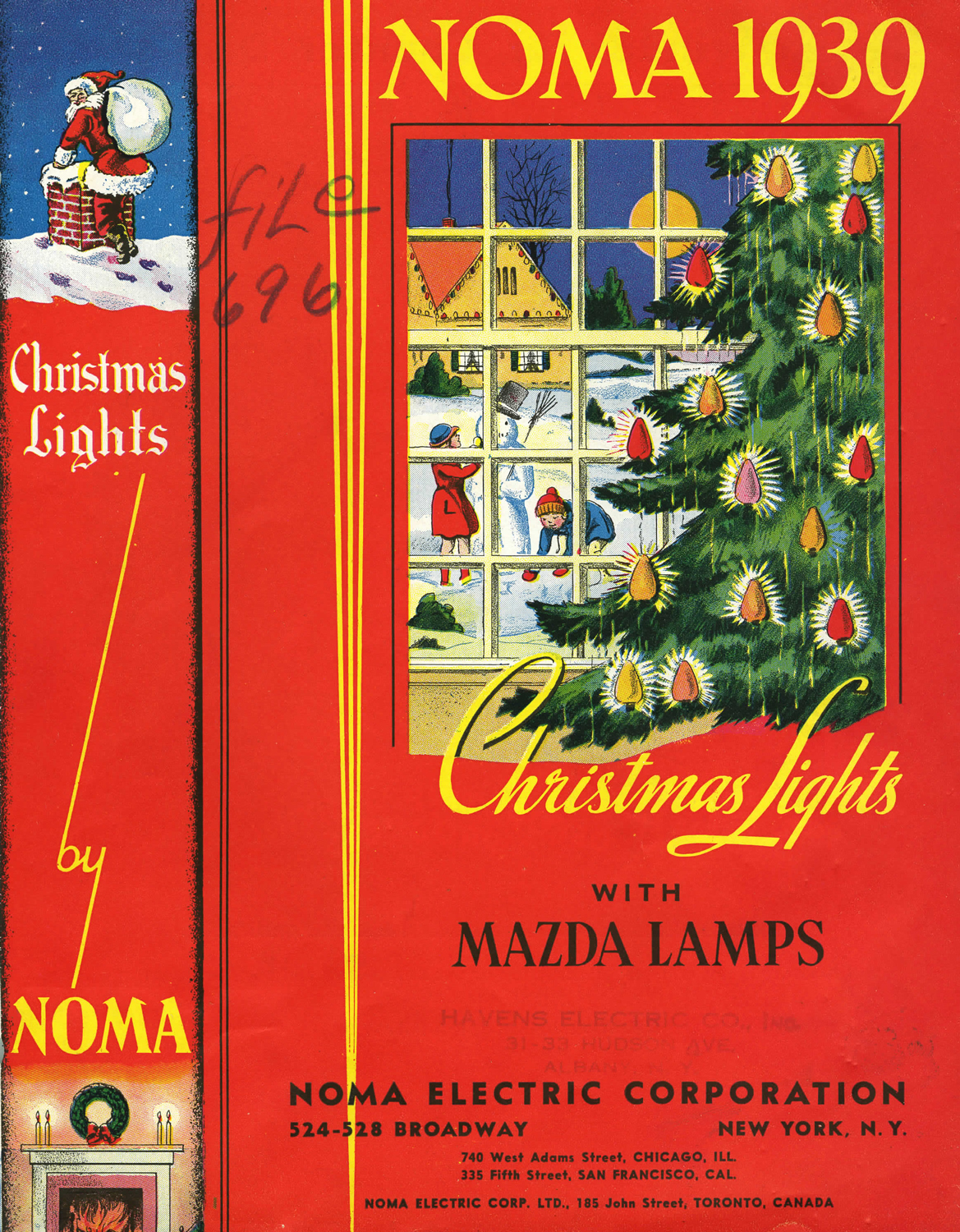In 1946, NOMA brought what was called the “bubble light” from the U.K. to the U.S. with an American patent. Within the plastic light casing, methylene chloride was heated to a very low boiling point, just enough to where it would visibly bubble through the plastic casing, hence the “bubble” light.
Despite the odd and somewhat gimmicky nature of the bubble light it swept the country and was incredibly popular for its time.
With the 1950s Space Age came the advent, and resulting popularity, of the aluminum Christmas tree. A tree which was fireproof (finally!), never died nor needed water, and offered a space age feel was too good to pass up.
Why was this significant? Because aluminum acts as a conductor, meaning Christmas lights couldn’t be placed on them. Instead of lights on the tree itself, people would use an illuminated color wheel like the one below. The wheel would spin around, illuminating the tree’s surface and making it appear as if it were lit.
Unfortunately for Christmas light companies at the time, the popularity of the aluminum Christmas tree lasted over a decade. As a result, the industry saw a significant drop in sales and in 1966 NOMA, then the largest Christmas light manufacturer in the world, officially filed for bankruptcy.
It’s not known exactly when the last U.S. manufacturer stopped making lights, but by 1978 nearly all U.S. light manufacturers had gone out of business or switched to foreign made sets.
With NOMA out of the picture and the U.S. Christmas light industry still reeling, G.E. (who was still in the game) decided to bring manufacturing overseas. However, in good news, the result was that Christmas lights one again underwent a drop in price.
G.E.’s new Merry Midget mini lights (which are still available today) were smaller, cheaper, and more outdoor-friendly, so people began lighting their houses all over the country with greater intensity. Although houses had been lit before this, the practice wasn’t very common until the creation of G.E.’s Merry Midget lights, hence the birth of the widespread tradition of lighting your home with Christmas lights during the holiday season.



